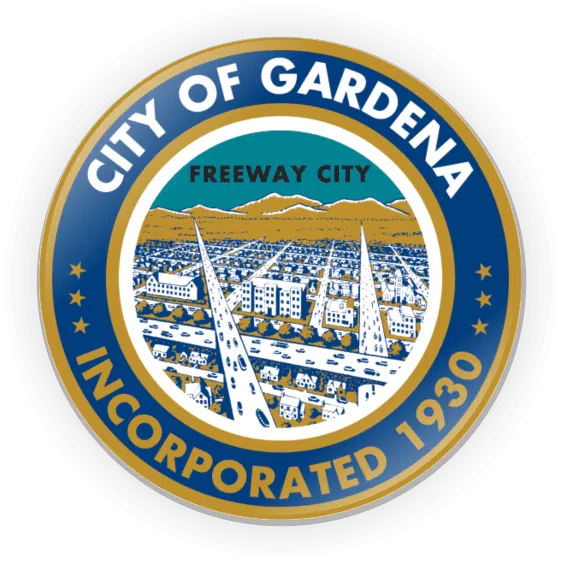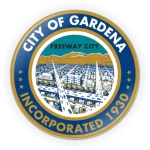The History of a Diverse Community
The early beginnings of Gardena as a community of homes, apart from the great rancho estates of the Dominguez, Amestoy, Ducazau, and Rosecrans families, date back to the 1880s. A Ventura man, Spencer R. Thorpe, is credited with having started the first settlement in Gardena Valley, centered near the intersection now known as 161st Street and Figueroa.
Reports differ as to how Gardena acquired its name, although it is possible that the name was derived in one of the following ways: One theory is that the name was given by Nettie Thompson, daughter of the man from whom Thorpe bought his subdivision, because the valley was such a beautiful garden spot. Others who have been given the credit were a Mr. Harris, about 1887; a schoolgirl named Lexie Nichols; or perhaps, Spencer Thorpe himself. However, it has also been conjectured that its name was derived from the “Garden Spot,” because of the fertile, green valley created by the nearby Laguna Dominguez slough and channel.
The City of Gardena was incorporated on September 11, 1930. It combined the rural communities of Gardena, Moneta, and Strawberry Park into a Municipal Corporation, Sixth Class City. At that time Gardena was a small farming community of about 20,000 people.
By action of the State Legislature in 1955, all Sixth Class Cities were officially designated as General Law Cities. As a General Law City there is no charter other than the laws, ordinances and resolutions passed and adopted by the City Council, and the appropriate statutes of the State of California.
Today Gardena is an active and progressive residential and business community with a City government that prides itself in providing a full range of qualified services to the community.
Community History
Founder of the City:
With funding from the Library Services and Technology Act administered by the California State Library, the County of Los Angeles Public Library has created a local history website for the City of Gardena along with fourteen other libraries. These local history websites provide answers to frequently asked community history questions twenty-four hours a day via the Internet. The websites provide information on Native Americans who lived in the area in prehistoric times, local missions and the early history of the community as well as other historical topics. They also contain images of historic community photographs and other documents, and links and citations to additional community history resources.

